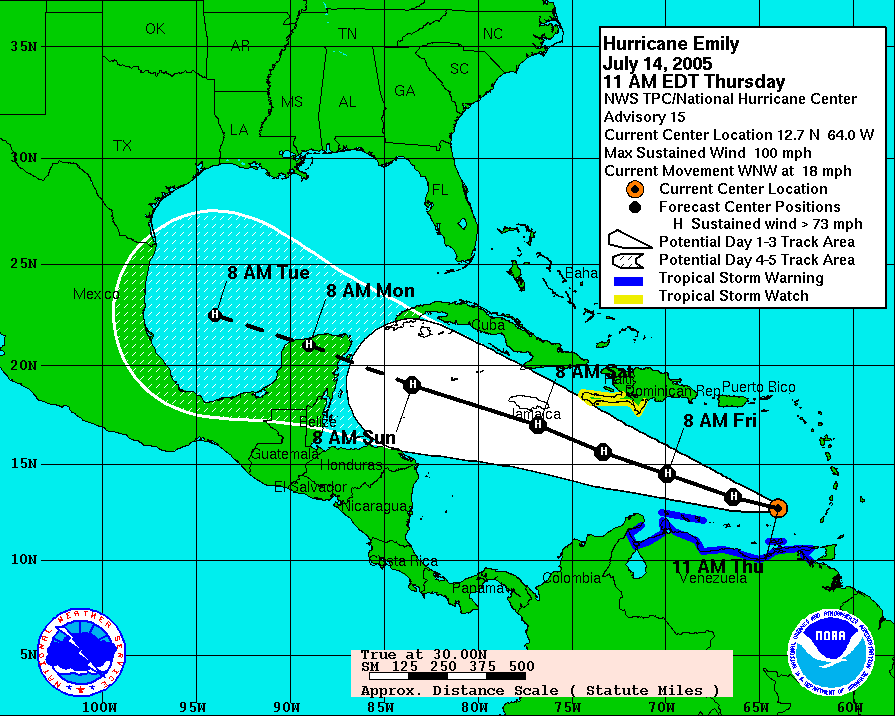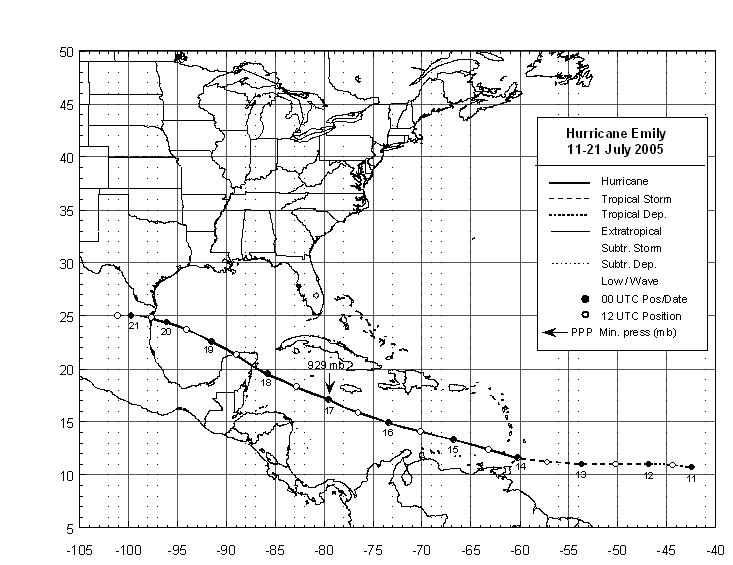

Hurricane Dennis from last week holds the record as the first strongest. The twelfth tropical cyclone, fifth named storm, second. Themenparks & Preise Urlaubscheck-Liste Notfall-Liste.
Emily hurricane track update#
It was the first hurricane in the Caribbean Sea since Hurricane Katrina of 1981 and had the second-fastest forward speed of a 20th-century hurricane, behind only the 1938 New England hurricane. Hurricane Update 26/2005 Dennis geht als Kategorie 3 Hurrikan an Land - Tropical Depression 5 bildet sich im Atlantik Manchmal passieren die Dinge. The tropical wave that spawned Emily move off the west coast of Africa into the Cape Verde Islands on August 17th. The September 1848 storm originated in the western Gulf of Mexico and made landfall near Tampa Bay, Florida as a category 4 hurricane. Hurricane Emily is a category 3 storm, and the second strongest July hurricane on record. Hurricane Emily was a powerful tropical cyclone that struck Hispaniola in September 1987. Hurricane Emily - August 31-September 1, 1993. This image shows the storms swirling wind patterns as observed by NASAs QuickScat. The October 1846 hurricane struck western Cuba with the intensity of a category 5 hurricane, producing devastating impacts in Havana before transitioning to an extratropical cyclone as it traveled northward across the eastern United States. Hurricane Emily is gradually building power in the southern Caribbean. The results show that the October 1844 storm made landfall in western Cuba as a category 4 hurricane, causing substantial damages to Matanzas and the surrounding area. The estimated intensity of the tropical cyclones throughout their life cycle was included in the storm tracks, and intensity upon landfall was categorized based on the Saffir-Simpson scale. A geographic information system (GIS) was used to construct the storm tracks of all three hurricanes and to map synoptic temperature data for the October 1846 and September 1848 storms. The data utilized in this study include ship logbooks, newspapers, diaries, and instrumental meteorological records. This thesis presents the reconstructed storm tracks, assesses the societal impacts, and evaluates the storm intensity of these three major hurricanes for the eastern U.S.

Hurricane tracking, tropical models, and more storm coverage. This paleotempestology study used original primary data to make the historical record as comprehensive and accurate as possible for three major hurricanes: October 1844, October 1846, and September 1848. Everything you need to monitor the tropics in one place.

Analyzing past tropical cyclone activity enables researchers to recognize patterns of hurricane variability, estimate hurricane return periods, and assess local risk to future storms.


 0 kommentar(er)
0 kommentar(er)
